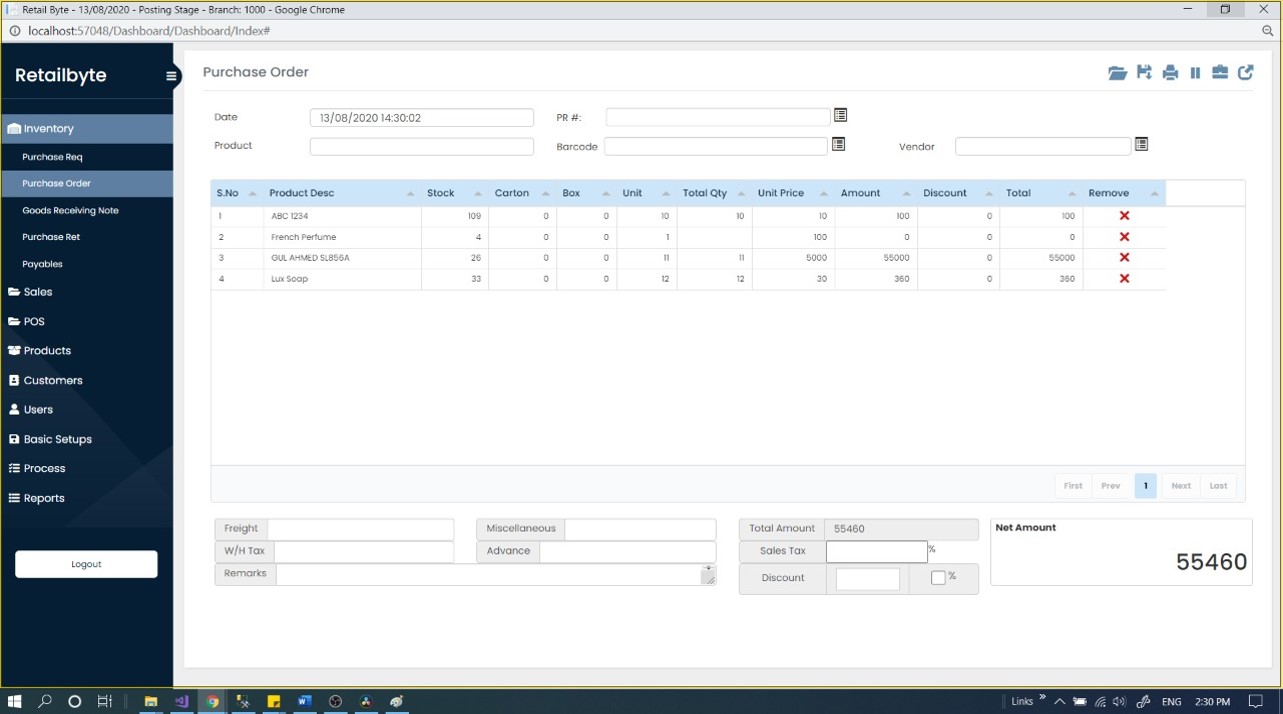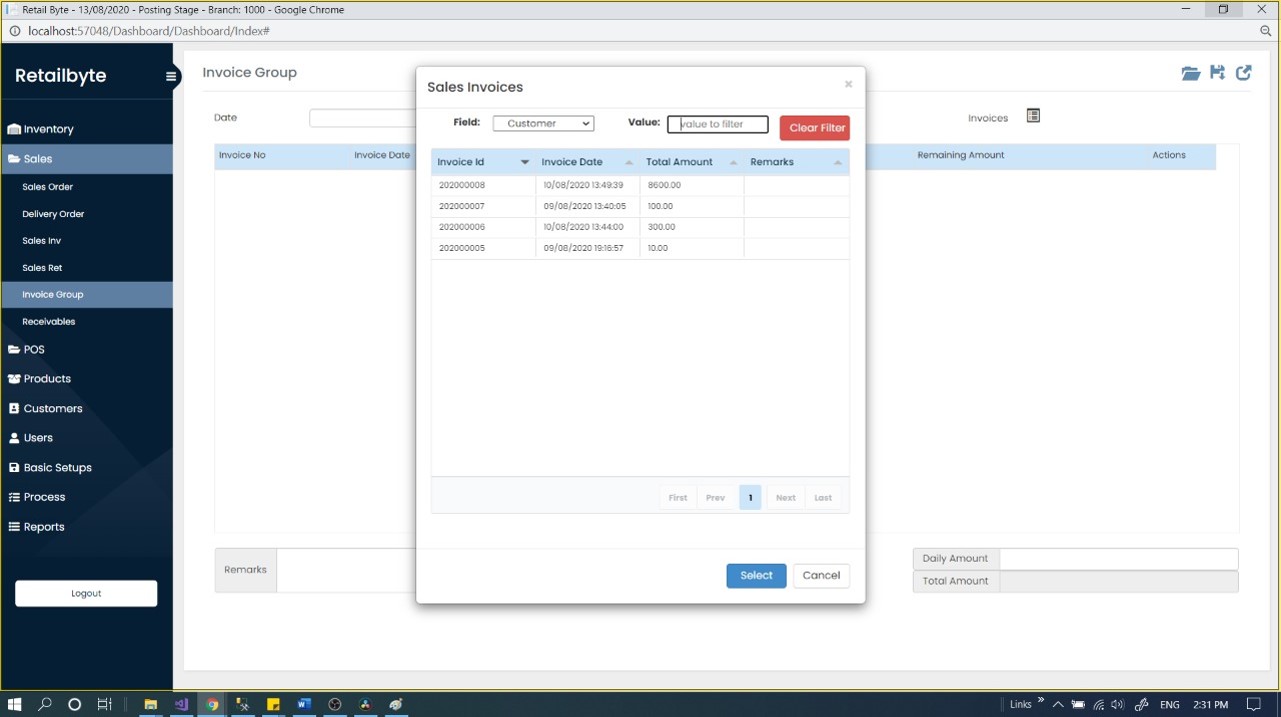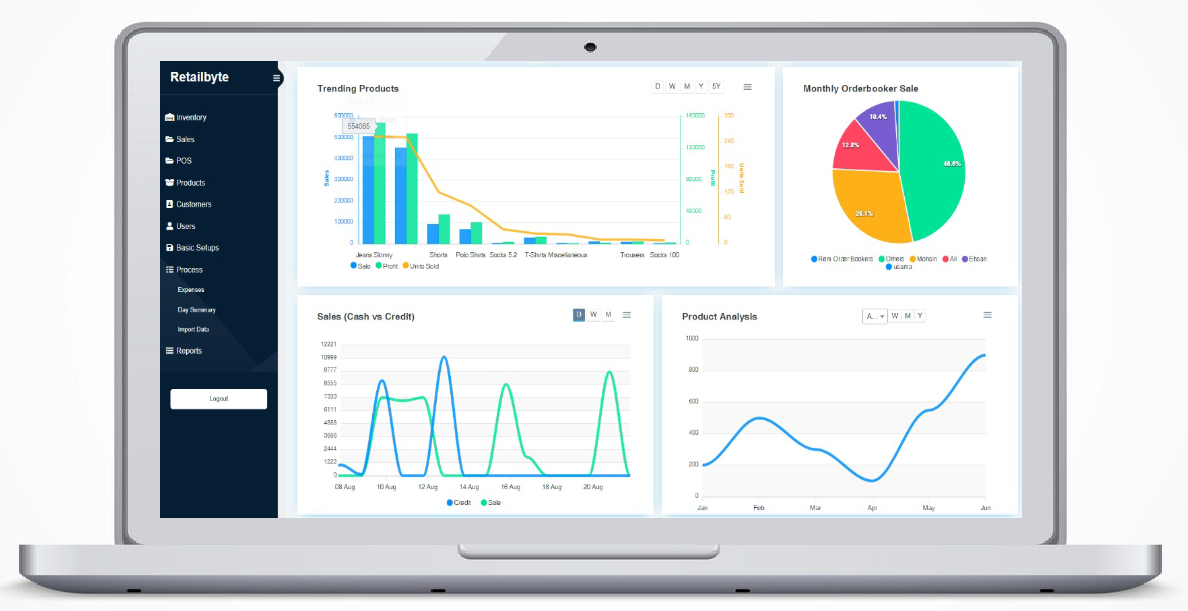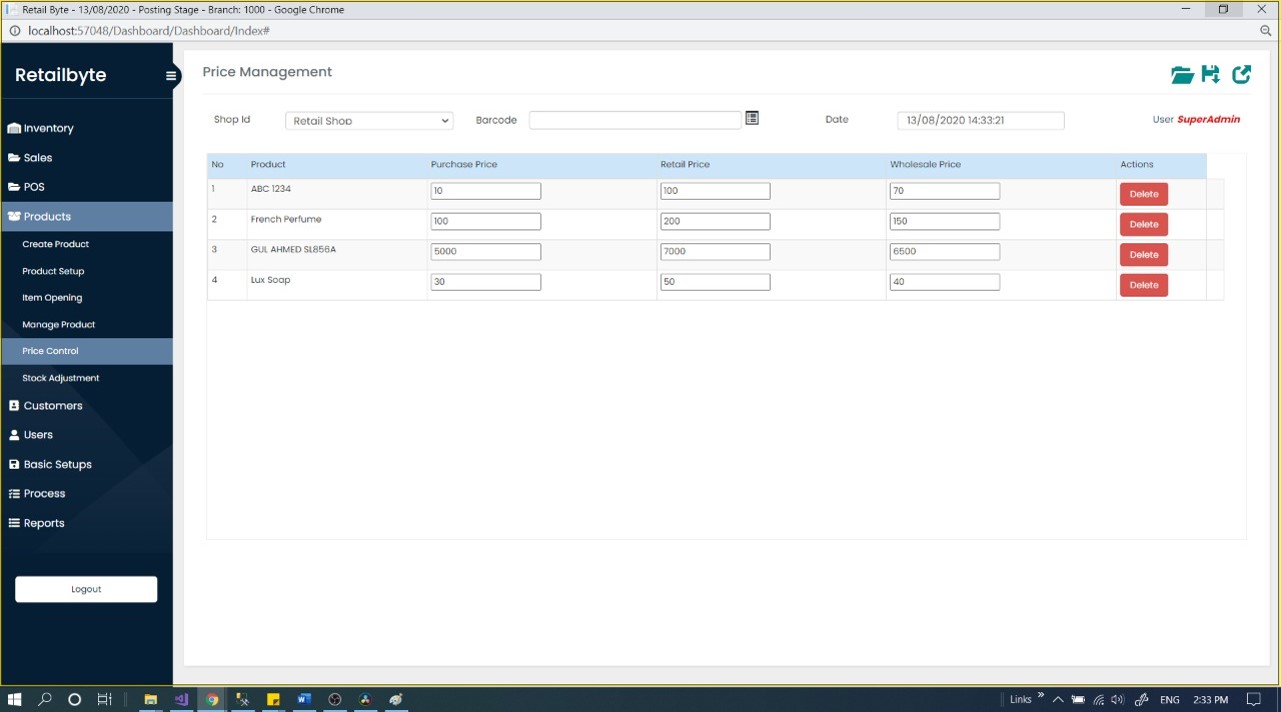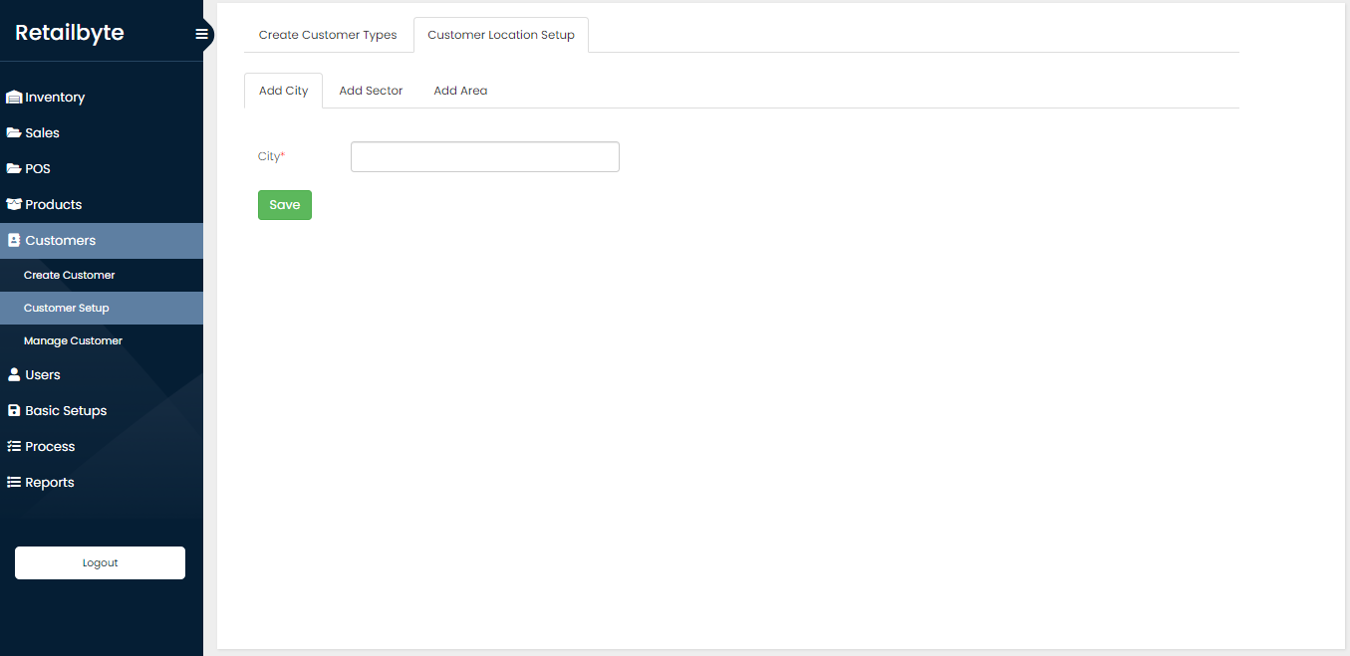Retail Byte
A web-based application for both Wholesalers and Distributors
-
RetailByte is simple Distribution and WholeSale Management System that allows you to manage and track sales and inventory with multipricing and various built in reports. It serves both as:
- a SaaS platform for distributors and wholesaler, to manage their inventory, sales, customers, orders, and product,
- all-in-one POS tool to manage retail transactions and stock records.
Technologies -
Purchase/Branch Requisition is a document which tells the procurement department or manager exactly what items and services are requested, the quantity, source and associated.
Purchase Order is a commercial document and first official offer issued by a buyer to a seller indicating types, quantities, and agreed prices for products or services. It is used to control the purchasing of products and services from external suppliers.
Goods Receiving Note (GRN) is a record of goods received from suppliers, and the record is shown as a proof that ordered products had been received.
Purchase Return is the journal which is used to record the goods which are returned to the suppliers.
Payables is money owed by a business to its suppliers shown as a liability on a company's balance sheet
-
Sale Order is an order issued by a business or sole trader to a customer. A sales order may be for products and/or services.
Delivery Order Order is a document from a consignee, or an owner or his agent of freight carrier which orders the release of the transportation of cargo to another party.
Sale Invoice is an accounting document that records a business transaction. It provide the business with a record of the services they've provided to a client, when the services were rendered and how much money the client owes the business.
Sale Return Merchandise that was returned to the seller by a customer. When merchandise sold on credit is returned, this account is debited and Accounts Receivable is credited.
Receivables are legally enforceable claims for payment held by a business for goods supplied and/or services rendered that customers/clients have ordered but not paid for.
-
POS At the point of sale, the merchant calculates the total amount for the retail customer to pay for the goods he purchased.
POS Return In Point of sale return, Customer can show the receipt of the earlier transaction and give the product he wants to return or exchange, and merchant will state his reason and make a POS transaction for the returned product
-
Create Product
Product Creation is essential to every transaction in the entire system, System User can create product with all the details like Barcode, Reference No, Name, Description, Vendor, Category, Brand and any other important detail for the business.Product Setup manages all the master data related to Products, here System User can create Categories, Brands, Family, Colors or any other product attribute needed.
Item Opening is specific to opening quatity of the product and will be used at the start of implementing the system.
Manage Product
helps in visualizing prodcuts on every screen of the system where product list is shown. System User can active/ inactive any product he wantsPrice Control helps in controlling the various prices of each product i.e, Retail, Wholesale, Purchase and SalesTax Price. Authorized user can set the product prices in bulk from this Section.
Stock Control
In order for successful business, one must need all the items in inventory. For this to be succefull, User must set minimum and maximum stock level of each product. If this is successfully implemented then user can auto generate Purchase Requisition for every vendor.Barcode Management covers the barcode printing of the products. User can print barcodes in bulk according to quantity needs. It helps in smooth POS process if barcode scanner is used.
-
Create Customer helps in creating customers and vendors by providing some basic information like Name, Address, Contact etc.
Customer Setup manages all the master data related to Customers, here System User can create Customer Type, Cities, Areas and Sectors for reporting point of view.
Manage Customer helps in visualizing customers on every screen of the system where customer list is shown. System User can active/ inactive any customer he wants
-
Create User
There are two types of Stake Holders for the system.
i) Users that can perform transactions in the entire software.
ii) Order Bookers (Users that take orders from the clients),
Both Users can be created from this sectionCreate Roles
Each user have different duties to perform, so Admin can create roles from here as what to show in each role.Assign Roles: From the created roles, admin can assign each user a role here and only those modules are visible to user that user has rights to.
